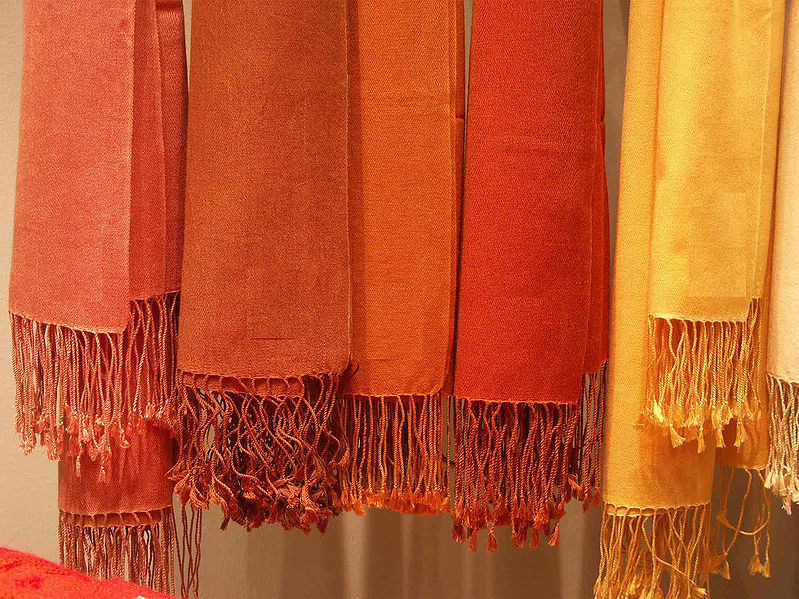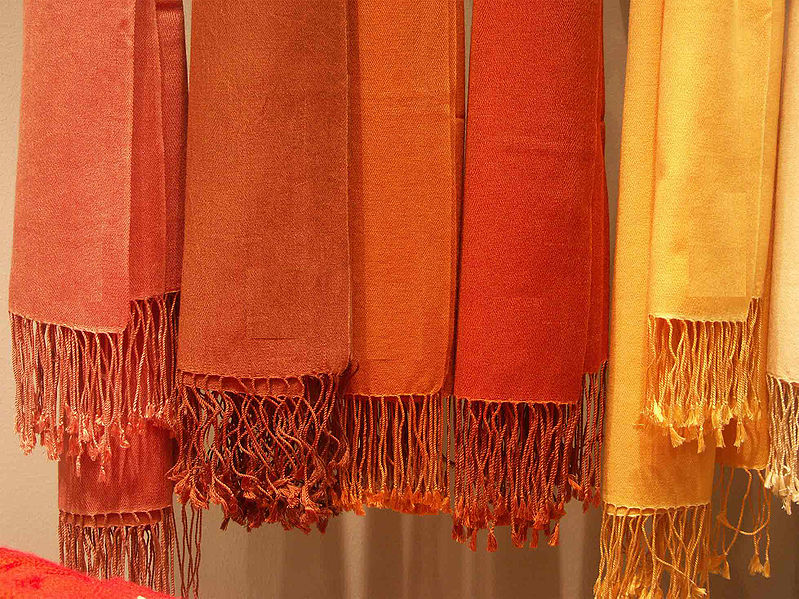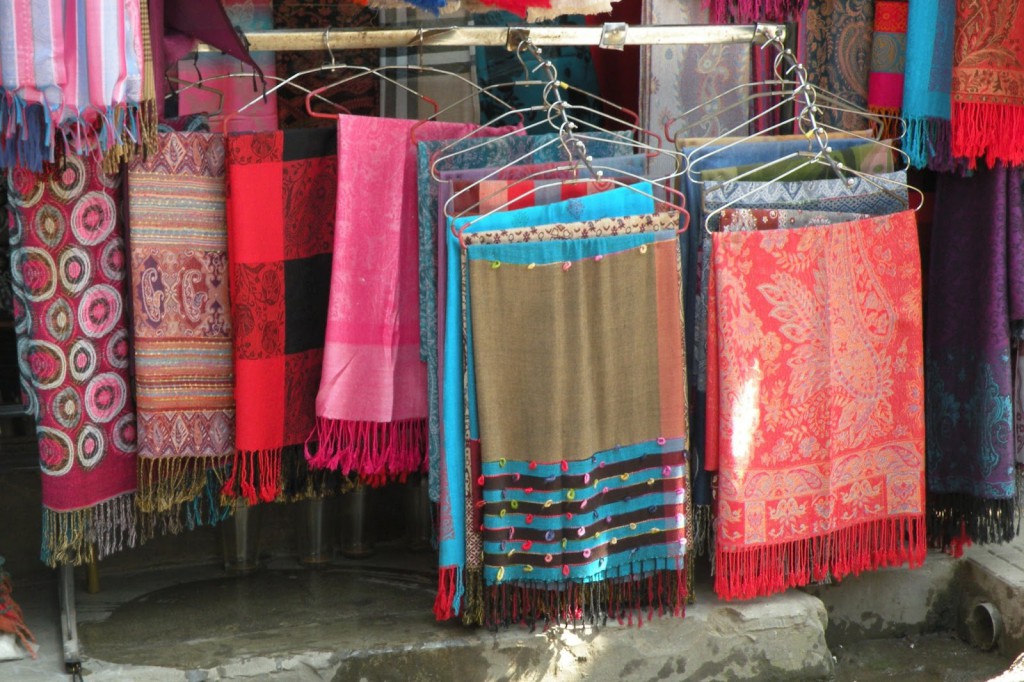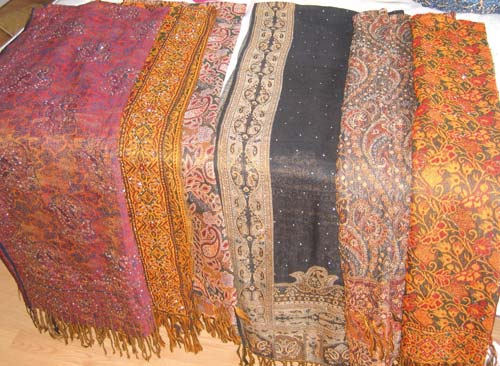
Pashmina Fabric
Pashmina (also known as Pashm) is a fine cashmere wool, coming from Kashmir in India and some parts of Nepal. The word ‘Pashmina’ comes from the Persian word ‘Pashmineh’ which means ‘made from Pashm’, and Pash means wool in Persian. The Iranians, who came to Kashmir via the Ladakh route, gave the fabric its name, ‘Pashmina’.
The wool comes from either a Changthangi goat or a Pashmina goat which are a special breed of goats indigenous to the high altitude regions of Nepal and India. The famous Pashmina shawls are made from this fine fiber.
Origin
The Pashmina Goat was first discovered by a prominent Muslim scholar, Mir Sayyid Ali Hamadani in Ladakh in the 1300s. Earlier, the fiber was also known as pashm. The first mention of Kashmiri woolen shawls were found in the Afghan texts between the 4th century BC and the 10th century AD. However, it was the 15th-century ruler of Kashmir, Zayn-ul-Abidin, who started the Cashmere wool industry in India by introducing weavers from Central Asian countries.
The Making
The Changpa tribe, from the Changthang region are known to be the traditional producers of Pashmina Wool in the Ladakh region. These tribal people rear sheep in harsh and chilly winter climate and lead a nomadic life to produce Pashmina wool.
The Cashmere wool is collected every spring from the goats shedding their winter coat. Approximately 80–170 grams of the fiber is collected from each goat and spun to produce Cashmere. Throughout the winter season, the inner coat of the goat’s wool re-grows and becomes ready for extraction of wool in the next Spring.
The quality of the cashmere produced in the Gobi Desert is regarded better than the Himalayas variant, because of its consistent manufacturing process and modern machinery.
Difference Between Cashmere and Pashmina
Cashmere shawls are being made in Kashmir and Nepal from thousands of years. Both, the Pashmina and Cashmere shawls are derived from mountain sheep. The main difference between them is the diameter of the fiber. The Pashmina fibers are finer and thinner than the cashmere ones and, therefore, ideal for making lightweight apparel like fine scarves.
Variety
The Pashmina comes in 2 main variants – Ladakh Pashmina and Pashmina from Nepal. Shawls from Nepal are regarded as the best in quality because the mountain goats adapted to the harsh cold climate over the years develop a coat which provides an exceptionally warm and light fiber. It is slightly warmer and coarser than the Cashmere fibers obtained from lower region goats. Ones from Nepal is called the Chyangra Pashmina. The shawl from Nepal came into the limelight when it was worn by Princess Diana.
Ladakh pashmina is also similar to the Nepali pashmina as it is also manufactured in the similar high altitudes in Kashmir near the India-China border. Amidst the cold temperatures, these goats develop a unique, incredibly soft pashm (inner coat) which is six times finer than that of human hair. Since the fiber is very fine, it cannot be spun by machines. So, the wool is hand-woven into Cashmere products like scarves, shawls and wraps, etc.
Maintenance
A Cashmere product can last for years if taken proper care. It gets softer and more luxurious with each wash. This fabric should preferably be dry cleaned. However, you can gently hand wash it occasionally with a woolen fabric detergent. Hand washing a new Pashmina is recommended to make sure that the natural vegetable dyes do not bleed any color. After washing it, leave it on a flat surface to dry.
References
Categories: Textiles



